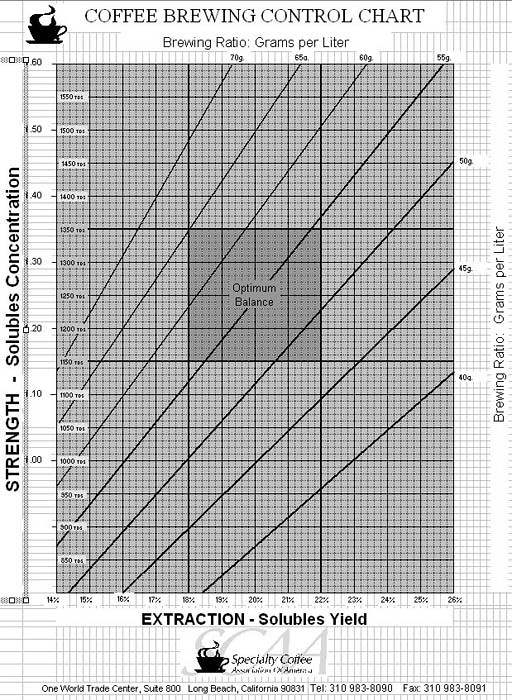Apart from the acidity, flavor and body, there is another crucial element to tasting coffees. This crucial element no longer depends on the types of beans you use, but really, it is all on the skill of the person brewing it. This element is the Extraction Level.
A cup of brewed coffee mainly consists of water and 1.5% by weight of coffee solutes (or 1.5% of Total Dissolved Solids, TDS for coffee geeks like us). Generally, if our calculations aren’t off, that works out to be about 20% by weight extracted from the coffee grounds, also known as ‘extraction yield’. This is the concentration and the strength of the coffee.
What we are concerned about, though, is the composition of whatever is dissolved in your cup. For coffees, about a total of 30% by weight is soluble compounds. However, there is a huge variety of flavor compounds in the cup (identifying all of them is still an area of research today) and it’s useful to know that different compounds are extracted at different rates. Usually, the acids and the flavor comes out first, followed by the compounds that give it body. Thereafter, the compounds that give coffee it’s bitter flavors dominate. The first few drops of coffee that drip out of your coffee machine aren’t going to taste the same as the last few drops (try it), neither is it going to taste like the final delicious cup at all.
There’s a sweet spot, about 18-22% dissolved, which varies for different coffees. It is at this sweet spot that all the flavorful compounds in your coffee, the stuff that gives you your body, flavor and acidity, are all in harmony, producing what we call a “Balanced Cup”. You don’t want coffee that’s super bright but lacking in the ‘oomph’ that body gives.
Let’s say you leave your coffee in the french press for a little too long. You know, you got busy, and forgot. More than 25% of the soluble compounds gets extracted from the coffee grounds, and we get something called over-extraction. Because of the different rates of extraction of coffee, this tends to draw out the bitter elements of the coffee. It’s usually brash, bold and generally unpleasant. Conversely, if too little is extracted from the coffee grounds, we get under-extraction. This usually means that the sugars in the coffee are not drawn out, resulting in an overly tart cup of coffee without any sweetness or subtle bitters to balance it out. This usually tastes a little ‘raw’.
Both over-extractions and under-extractions are no-nos. You get quite a bit of over-extracted coffee in most diners, which isn’t too surprising, given that diner coffees are almost always consumed with sugar (to lessen the bitters) and cream (to remove astringency). What is surprising, though, is the fact that you get quite a bit of under-extracted coffee in many cafes that pride themselves for their participation in the Third Wave Coffee movement. Various places have been developing increasingly tart cups that do feel like they’re lacking something, feeling a little thin.


